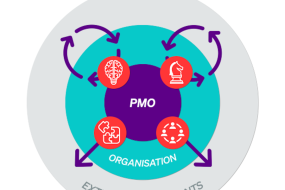
In the ever-evolving landscape of the internet, where user experience reigns supreme, the role of second-level domains (SLDs) has taken center stage. Understanding how these adaptive SLDs are changing the game is pivotal for businesses and individuals looking to establish a strong online presence. Let’s delve into the intricacies of domain levels, explore the significance of second-level domains, and unveil the list of top-level domains that are shaping the digital realm.
Decoding Domain Levels
Before we plunge into the depths of adaptive second-level domains, let’s unravel the hierarchy of domain levels. From top-level domains (TLDs) like .com and .org to country-code top-level domains (ccTLDs) like .uk and .jp, each level serves a unique purpose. Understanding this structure is fundamental in grasping the impact of second-level domains.
At the pinnacle, TLDs distinguish the broader categories of websites. Beneath them, second-level domains offer a more specific identity, often representing brands or entities. The adaptability of these second-level domains allows for a personalized and memorable online presence.
The Rise of Adaptive Second-Level Domains
In recent years, the concept of adaptive second-level domains has gained traction. Unlike static domains, these adapt to user behavior and preferences, enhancing the overall user experience. This adaptive nature is achieved through advanced algorithms and machine learning, tailoring content and interactions based on user data.
The shift towards adaptive SLDs marks a departure from conventional static domains, ushering in a new era of dynamic and personalized online experiences. This evolution is reshaping the way businesses and individuals engage with their audience.
Unveiling the Dynamics of Different Domains
Not all domains are created equal, and understanding the dynamics of different domains is crucial for effective online branding. Adaptive second-level domains offer a unique advantage by combining the specificity of SLDs with the adaptability required in today’s dynamic digital landscape.
From generic TLDs to industry-specific ones, each domain type plays a distinct role. Adaptive SLDs, however, bridge the gap between personalization and responsiveness, making them a formidable choice for those aiming to stand out in the digital crowd.
Navigating the Landscape of Second-Level Domains
As we navigate the expansive landscape of second-level domains, it’s essential to recognize their diverse applications. Whether you’re a business aiming for a memorable online presence or an individual carving out a niche, choosing the right SLD is pivotal.
Considerations such as brand identity, target audience, and industry trends come into play. Adaptive second-level domains, with their ability to evolve in real-time, offer a strategic advantage, ensuring that your online presence remains not only relevant but also engaging.
The List of Top-Level Domains: Beyond the Basics
While the .com and .net domains remain ubiquitous, the digital realm now boasts a plethora of top-level domains catering to specific niches. From .tech to .blog, the choices are diverse, allowing businesses and individuals to align their domain with their brand identity.
Adaptive second-level domains seamlessly integrate with this diverse array of TLDs, providing a dynamic and responsive platform for content delivery. This synergy between adaptive SLDs and unique TLDs is reshaping the way websites are perceived and interacted with.
Final Words
In conclusion, the landscape of online identity is undergoing a transformation, and adaptive second-level domains are at the forefront of this revolution. As businesses and individuals strive for a distinctive online presence, the synergy between adaptive SLDs and diverse TLDs offers an unprecedented opportunity.
In a digital era where user experience reigns supreme, the adaptability of second-level domains is not just a trend but a necessity. Embrace this evolution, choose your domain wisely, and revolutionize your online identity.
Commonly Asked Questions
Q1: What makes adaptive second-level domains different from static ones?
Adaptive second-level domains utilize advanced algorithms and machine learning to tailor content based on user behavior, providing a dynamic and personalized experience. Unlike static domains, they adapt in real-time, enhancing user engagement.
Q2: How do I choose the right second-level domain for my business?
Consider factors such as brand identity, target audience, and industry trends. Adaptive second-level domains offer a strategic advantage, combining specificity with adaptability to ensure a relevant and engaging online presence.
Q3: Are there specific industries where adaptive second-level domains are more beneficial?
Adaptive second-level domains are versatile and beneficial across various industries. They are particularly advantageous for businesses that prioritize personalized and dynamic online experiences to stand out in the digital crowd.
Q4: Can adaptive second-level domains work with any top-level domain?
Yes, adaptive second-level domains seamlessly integrate with a diverse array of top-level domains. From .tech to .blog, the adaptability of second-level domains complements unique TLDs, reshaping the perception and interaction of websites.
Q5: How does the adaptive nature of second-level domains impact SEO?
The adaptive nature of second-level domains positively impacts SEO by enhancing user experience. Personalized and engaging content leads to longer user interactions, reduced bounce rates, and ultimately, improved search engine rankings.
Advertisement








